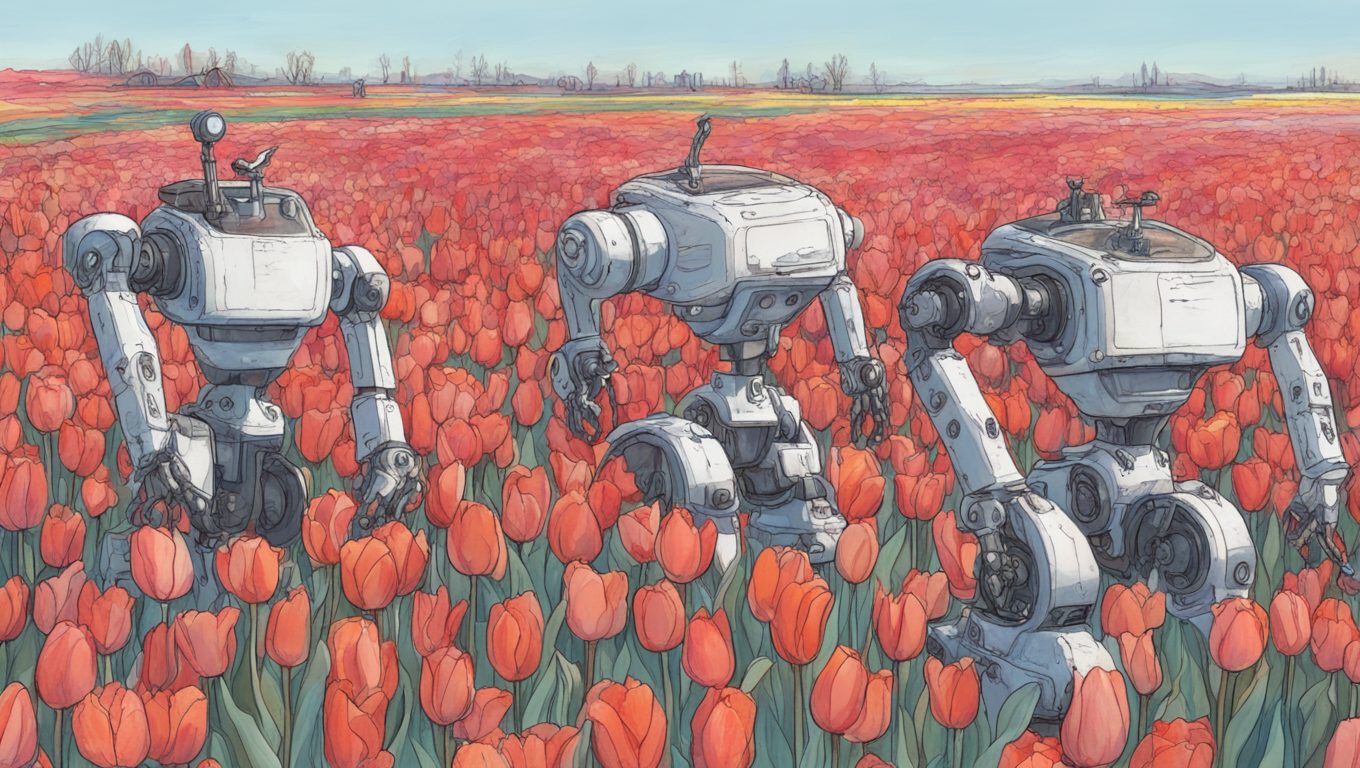On a farm near the Dutch North Sea coast, a boxy robot named Theo tirelessly works to ensure the health of tulip fields. Theo, named after a retired farm employee, is at the forefront of the battle against disease in bulb fields as they burst into vibrant colors during springtime. Equipped with artificial intelligence (AI) and cameras, this high-tech robot inspects each tulip plant, identifying and killing diseased bulbs to prevent the spread of the tulip-breaking virus.
The tulip-breaking virus stunts the growth and development of plants, resulting in smaller and weaker flowers. The affected bulbs become progressively weaker and eventually fail to flower altogether. To combat this virus, farmers in the Netherlands have turned to robots like Theo. As the weather warms up and peak season approaches, there are now 45 robots patrolling tulip fields across the country.
Traditionally, humans performed the task of detecting and removing diseased plants. However, the use of robots allows farmers to efficiently tackle the problem while significantly reducing labor costs. Allan Visser, a third-generation tulip farmer who uses the robot for the second growing season, expressed his preference for the robot over a sports car, despite its price tag of 185,000 euros ($200,000). He believes the robot’s ability to detect and remove sick tulips outweighs the expense and the declining number of people with the expertise to spot the disease.
Theo moves slowly, traveling at one kilometer per hour (0.6 mph) on caterpillar tracks, meticulously examining each tulip. Equipped with cameras, the robot captures thousands of images of the flowers. An AI model then processes these images to determine if a tulip is diseased or healthy. Erik de Jong, from H2L Robotics, the company responsible for building the robots, explained how this AI technology enables the robots to identify sick flowers. “The heart of the machine is the knowledge that we put into the AI model. The knowledge comes from tulip farmers. So we use the knowledge of the tulip farmers, we combine it into an AI model,” he said.
Thanks to AI and precise GPS coordinates, the robots can accurately pinpoint the flowers that need to be destroyed. This precision agriculture not only helps limit the spread of disease but also ensures that healthy flowers are cultivated for export and the tourism industry, which depends heavily on the beauty of tulip fields.
Theo’s work is admired by the retired employee for whom the robot was named, Theo van der Voort. Having spent 52 years hunting for sick flowers, van der Voort remarked, “It’s fantastic. It sees just as much as I see.”
With the use of AI-powered robots in tulip fields, Dutch farmers are embracing technology to preserve the health and beauty of their blooms. By employing precision agriculture and combining the knowledge of experienced farmers with machine learning, these robots are revolutionizing the industry. As technology continues to advance, it is becoming increasingly clear that AI and robotics have a crucial role to play in agriculture, ensuring the flourishing of crops and pushing the boundaries of productivity.





Use the share button below if you liked it.